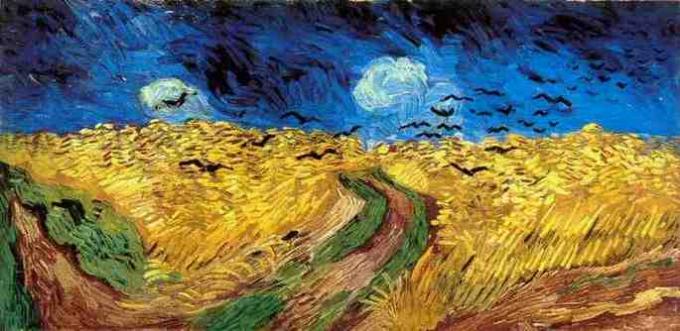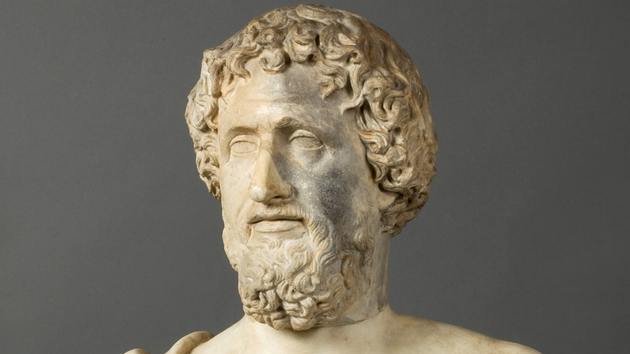Van Gogh (1853-1890) was a Dutch painter of the late 19th century and one of the greatest exponents of post-impressionism.
His works were valued after his death and had a great influence on the art of the following century, especially in the expressionist strand.
He was an intense man, who used art as a survival tool in the midst of an agitated and unstable emotional and psychological health.
He is considered a true painting genius. He had a relatively short career as a painter, about ten years.
However, he produced a huge amount of canvases, as he worked incessantly, leaving us an impressive legacy and charged with passion.
Van Gogh Biography
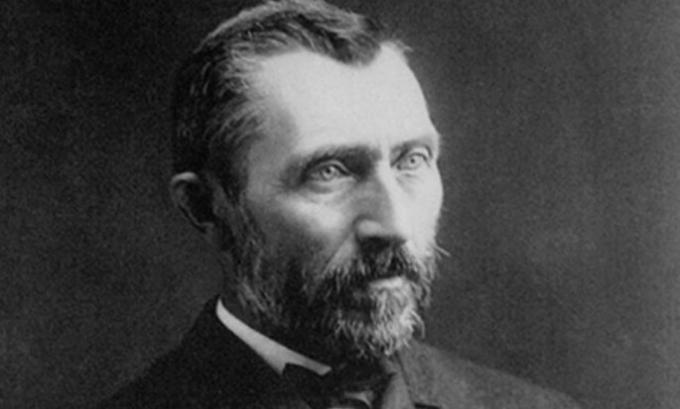
Vincent Willem van Gogh was born in Zundert, Holland, on March 30, 1853. Son of Pastor Theodorus van Gogh and Ana Cornelius Carbentus, Van Gogh was the first child of six siblings.
Since he was little he had a difficult life, marked by poverty, misery and disease. His younger brother, Theo, was a pivotal figure in Van Gogh's life, as he helped and was by his side for most of his life.
Van Gogh's Youth
Vincent began his studies in an inharmonious way, in various institutions. He was a regular student and acquired the habit of reading, which helped him in informal knowledge throughout his life.
At the age of 15, he abandoned his studies and, the following year, started working with an art dealer, in The Hague, Holland, on the recommendation of his uncle.
A few years later he tries life in London and later in Paris. He studied theology in Amsterdam and approached religious matters with intensity.
Van Gogh's Religiousness
At about 20 years of age, Van Gogh travels to Borinage, Belgium, to be a religious missionary. At that time, he gets involved with the hard toil of workers in the mines in the region.
He began to sleep in precarious conditions and help those in need, seeking precisely to bring his life closer to theirs.
Van Gogh lived well with what he had, however, his behavior was not understood and he was denied permission to preach the word. He then abandoned the religious life, frustrated, and began to devote himself to art.
Art Studies and Van Gogh's Loves
In 1880 he began to engage in artistic studies, attending the Escola de Belas-Artes. In the period, he was influenced by the realist painting of Jean-Francois Millet.
He later continues his studies in Etten when he returns to his father's house. At this point in his life, he falls in love with his cousin Kee Vos Stricker, but is rejected and deeply shaken.
Afterwards, he goes to the city of The Hague, where he shows his work to merchants in the art sector and starts painting with oil paint.
He later meets Clasina Maria Hoornik, a former prostitute known as Sien. Van Gogh becomes involved with her, who had a child and was pregnant. Vincent welcomes the girl and her son into the studio, but after the child is born, Sien abandons the painter.
From then on, Van Gogh will no longer have significant love affairs for the rest of his life.

Studies of Van Gogh's Japanese Color and Phase
In 1883 Vincent returned to Nuenen, in his country's house, and stayed there for two years. During this period he dedicated himself to the in-depth study of color and painted over 200 works.
Unfortunately, even at this time, Vincent was not understood and was seen as a rebel. In any case, he teaches painting classes and encourages students to paint "in one stroke" quickly and without retouching.
With the sudden death of his father in 1885, he decides to go to Antwerp, where he spends three months. This was an important moment in his career, marked by the influence of Japanese art, with which he had contact in that city.
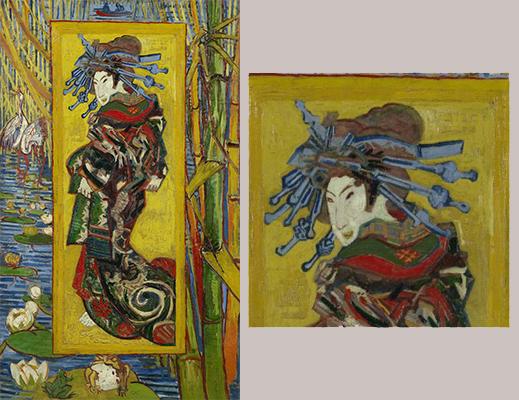
We can notice some characteristics present in his works from this period, such as the use of strong colors and the recurrent use of lines.
Van Gogh in Paris
Van Gogh goes to Paris for the first time in 1886, where he spent two years living with his brother, Theo.
There, he became involved with the Cormon Studio and he had contact with many outstanding painters of the time: Toulouse-Lautrec, Paul Gauguin, Monet, Renoir, Degas, Seurat, etc.
In this way, he became close to Impressionist art and pointillism, great influences for him.
Van Gogh and Gauguin in Arles
In 1888, Vincent went to Arles, a bucolic city located in the south of France, and intensified his work. Shortly thereafter, friend and painter Paul Gauguin (1848-1903) joins him.
Both had the objective of founding a community of artists in Arles, however, in view of their coexistence, misunderstandings arise between the painters, as the temperament of each one was very different.
This fact, Van Gogh expresses in the works Van Gogh's Chair with a Pipe and The Chair of Gauguin, both from 1888.

In these canvases, we can notice the differences between the personalities of these artists, as Gauguin's chair is more sophisticated, while Van Gogh's is simpler.
In December of that same year, during a fight, Van Gogh tries to attack Gauguin with a razor. Disturbed by the event, he cuts off his ear and gives it to a prostitute friend for her to give to Gauguin.
Van Gogh's Last Moments
Sick by depression, Van Gogh is hospitalized several times in Arles.
In May 1889, he was voluntarily admitted to the psychiatric hospital Saint-Paul-de-Mausole, in the region of Provence, where he stayed for a year.
Even at the hospital, he did not stop painting, an activity that helped him survive in the face of so much suffering.
When he leaves the hospital, Vincent goes to Paris to visit Theo. There, he spends three days, meets his little nephew and meets artist friends Pissarro, Toulouse-Lautrec and Tanguy.
In May 1890 he went to the town of Auvers-sur-Oise, near Paris. There he befriends Dr. Gachet, a doctor and lover of the arts, whom he portrays on a canvas. At the site, he also makes other paintings of the village and surroundings.
On July 27, 1890, he died under doubtful circumstances. The recurring story is that Van Gogh would have shot at you.
However, there is also the possibility that he was shot by some boys in the region. The fact may have actually occurred, as the weapon was never found.
In any case, Vincent never accused anyone and died two days later in the arms of his brother and great friend, Theo. The painter was only 37 years old.
His brother Theo dies six months after the incident and is buried next to him.
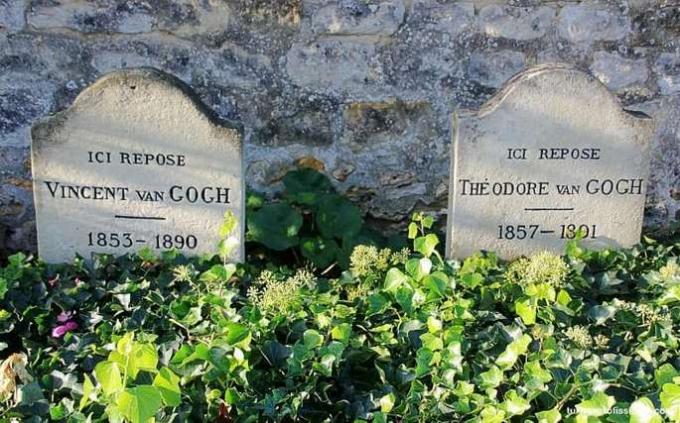
Van Gogh Works
Van Gogh painted over 400 canvases, where he portrayed peasants, nature, misery and made self-portraits. During his life, he only made one sale. Currently, his works are among the most expensive in the world.
Check out some paintings by the painter, arranged in chronological order.
Potato Eaters (1885)
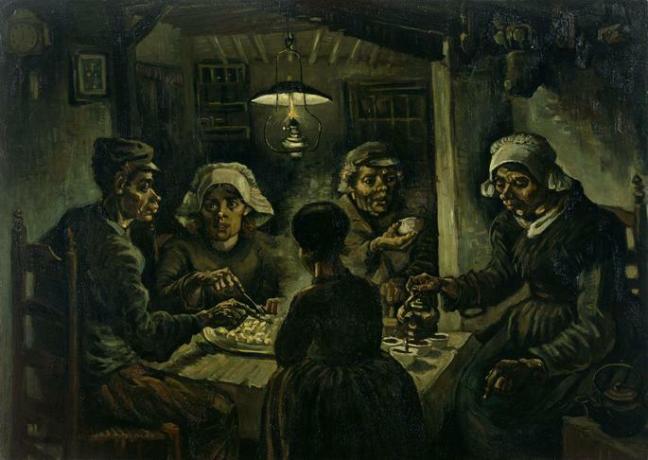
Skull with Access Cigarette (1886)

Portrait of Père Tanguy (1887)

Room in Arles (1888)

Self-portrait with Straw Hat (1888)

Olives (1889)

The Starry Night (1889)
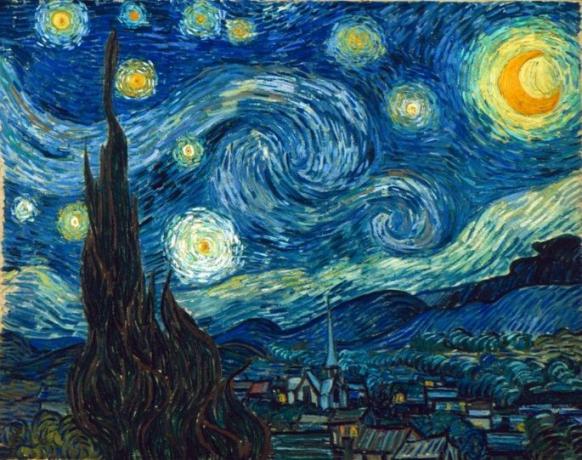
Self-portrait with the ear cut (1889)

The Sunflowers (1889)

View of Arles, Orchard in Bloom (1889)
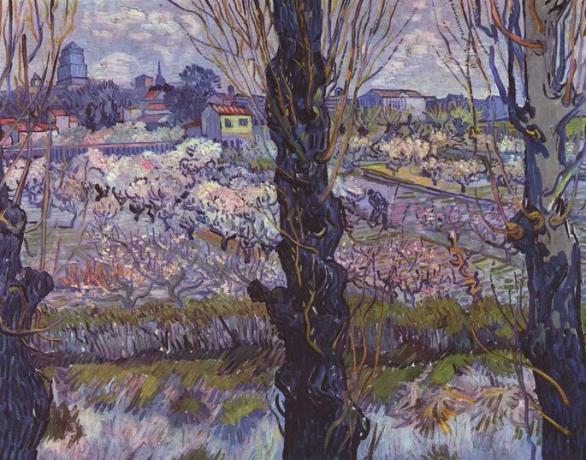
Wheat Field with Crows (1890)
Van Gogh Phrases
There are laws of proportion, light, shadow and perspective that you need to know to draw a motif; if this science is lacking, we risk eternally waging a sterile struggle and never succeed in creating.
My only concern is: How can I be of use in the world?
When I feel a terrible need for religion, I go out at night to paint the stars.
Fishermen know that the sea is dangerous and that the storm is terrible, but they never thought of these dangers as reason enough to stay ashore.
Let's not forget that emotions are the great captains of our lives, we obey them without realizing it.
After the experience of repeated attacks, humility suits me. So then: patience. Suffering without complaining is the only lesson you must learn in this life.
Curiosities about Van Gogh

- Van Gogh's mother gave birth to a boy exactly one year before he was born, on the same date of March 30th. The child did not survive and would be called Vincent, after the painter's name.
- The Van Gogh Museum, located in the city of Amsterdam, Netherlands, has the largest collection of works by Van Gogh, with more than 200 canvases, 500 illustrations and 750 written documents.
- It is speculated that on his deathbed, Van Gogh's last words to his brother Theo were: “The sadness will last forever.”
- Van Gogh was a great fan of absinthe, a very popular drink among Parisian artists.
Movie about Van Gogh
In 2018, a film was made about the life of Van Gogh entitled "At the gate of eternity". Check out the clip.
To further your studies, read also:
- European vanguards
- Modern Art
- Fauvism
- realism in art
Bibliographic references
Folha Collection - Great Masters of Painting
The History of Art - E.H. Gombrich

